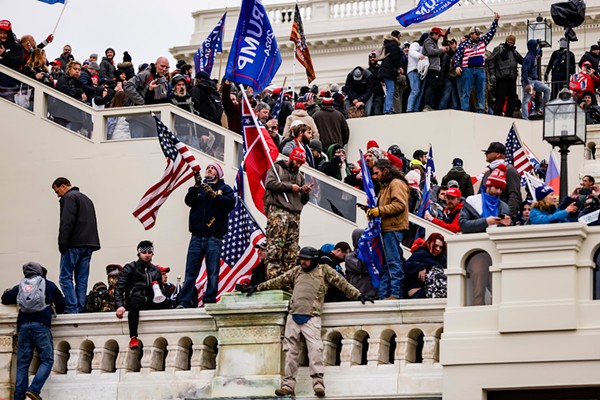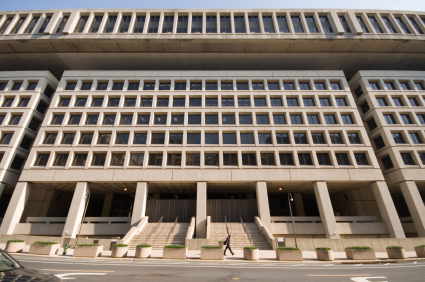
Ross Parker was chief of the criminal division in the U.S. Attorney’s Office in Detroit for 8 years and worked as an AUSA for 28 in that office. He is the author of the book “Carving Out the Rule of Law: The History of the United States Attorney’s Office in Eastern Michigan 1815–2008″.
By Ross Parker
ticklethewire.com
It was a tough year for law enforcement officers. Line of duty deaths, especially intentional killings of police, were up dramatically. Several categories of violent crime, including homicides, rose significantly after two decades of steady decline in crime statistics. Recruitment of new officers is becoming difficult, and officers confronting deadly situations are justifiably wary about the public (and media) second-guessing life or death decisions that had to be made under pressure within seconds.
Heather MacDonald, in her recent book The War On Cops, blames these developments on an anti-law enforcement movement led by groups like Black Lives Matter, accentuated by media attention, and facilitated by the policies of the Obama Administration. Whether you buy all of her conclusions, she does make a persuasive case that the current atmosphere in some segments of the public about law enforcement has resulted in officers being less aggressive in discretionary policing and that is a factor in a new crime wave, especially in the nation’s cities.
Into this troubling and dangerous situation, a potential boost in law enforcement confidence came this month from an unlikely source, a per curiam opinion by the U.S. Supreme Court.
Per curiam (Latin: by the Court) decisions are judgments by appellate courts as a whole in which no particular judge or Justice is identified as the author. In the Supreme Court per curiam opinions are almost always unanimous and usually represent brief rulings on non-controversial subjects. They tend to be short. They seldom set an important precedent or alter the rule of law.
But there are exceptions. In 1972 the per curiam opinion by the Court in Furman v. Georgia turned capital punishment upside down when it struck down every death penalty law and practice in the country as arbitrary and capricious under the 8th Amendment. It took four years for the states to re-institute death penalty statutes and, in many ways, the case began to diminish the role of the supreme penalty which continues to this day.
Bush v. Gore
In Bush v. Gore (2000) the Court issued a per curiam opinion in one of the most controversial cases in the Court’s history. The Court upheld the razor-thin Florida vote which gave the presidency to George Bush by a single electoral vote over Al Gore. The 5-4 vote followed party lines with the Republican appointed Justices in the majority, but the ruling was brief and unauthored. Harvard Professor Alan Dershowitz called it the “single most corrupt decision in Supreme Court history,” but others thought it was a profile in courage which preserved the republic.

Earlier this month the Court decided another per curiam opinion which has gotten much less attention but which could have profound implications, especially to law enforcement officers on the front line. White v. Pauly was an appeal from a civil ruling by a federal district court against New Mexico State Police Officer Ray White, who had shot and killed Samuel Pauley in a police confrontation outside of Santa Fe.
Witnesses had called 911 to report Pauley as a drunk driver. Two police officers went to his residence where he lived with his brother Daniel Pauly in a secluded area to talk with Pauly. They ordered him to open the door. It was asserted in the complaint that the brothers had not heard the officers identify themselves. The Paulys got their firearms.
A few minutes after the initial confrontation, Officer White arrived at the scene outside of the Pauly residence. The Paulys yelled that they had guns and Daniel fired two shotgun blasts outside the back door. Samuel stuck his handgun outside a window in the front of the house and pointed it in the officers’ direction. All three of the officers took cover, White behind a stone wall. One of the initial two officers fired his gun at Pauly and missed. Officer White fired and killed Samuel Pauly.
In the civil suit the three officers asserted qualified immunity, But the plaintiffs responded that the defense was not available since court opinions in other circumstances had stated that a warning was required before the use of deadly force even under the threat of serious harm. Officer White could not reasonably assume that this warning had taken place before his arrival. The district court agreed and the 10th Circuit Court of Appeals affirmed the ruling and ordered the case to go to trial. Officer White appealed to the Supreme Court.
The Court unanimously vacated this decision without oral argument in a brief per curiam opinion. Officer White had violated no clearly established law requiring a police officer facing an occupant pointing a firearm at him to identify himself and shout a warning before firing his weapon.
The Court pointed out that qualified immunity for law enforcement officers is important to society as a whole. Pre-existing law must give them fair and clear notice of impermissible conduct in order to invalidate the assertion of qualified immunity. Officer White’s conduct under the circumstances, especially his late arrival after the other officers had engaged the subjects, did not violate clearly established law. He could reasonably conclude in an ongoing police action that proper procedures had already been followed.
The case has been criticized as giving police a “license to kill.” But Supreme Court Justices are aware of the issues of the day. They watch TV. Maybe they are sending a signal that the courts should not second-guess law enforcement officers who have to make split second decisions on the use of deadly force by weakening qualified immunity.
Or perhaps they are just tired of the judiciary being asked to make social policy on confrontations between police and potentially dangerous subjects in the context of law suits against police.
Or maybe, like most garden variety per curiam opinions, the case represents a narrow ruling on a unique set of facts with little or no policy-making implications.




